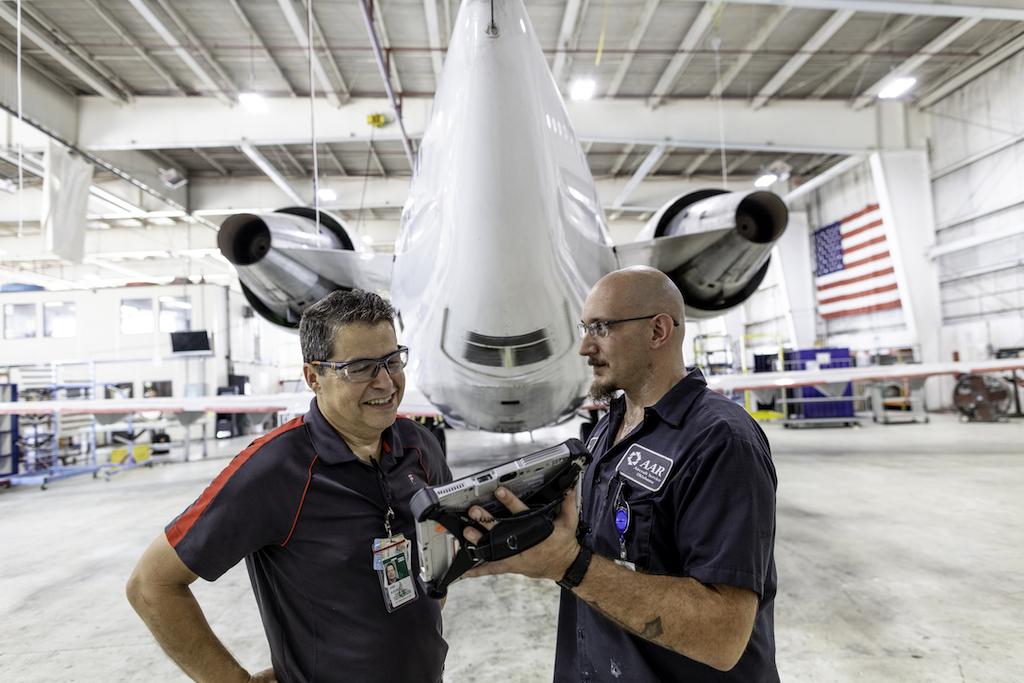
AAR purchased Trax for $120 million on March 20, but it started courting the MRO software provider 10 years ago.
“We got to know them, got really excited about their entrepreneurial spirit,” says John Holmes, AAR president, CEO and chairman, who adds that AAR management were impressed by the ecosystem Trax built.
A decade ago Trax’s owners were not ready to sell, but Holmes says: “Honestly, this is a much better time because of where they are in their product evolution.” Now Trax data is available in the cloud and the IT company offers applications.
The deal fits into AAR’s digital strategy, which has two goals. The first is to increase internal efficiencies, such as transitioning to paperless operations. Acquiring Trax should really help the second, which is “developing new digital sources of revenue,” such as selling parts online and expanding Airvolution, its cloud-based component repair management platform, Holmes says.
The acquisition also plays into AAR’s strategy “to continue to improve the margin profile of the company,” which has consistently improved over the last couple of years, Holmes says. Trax’s operating margins are “double or triple” that of other parts of AAR segments, so it leapfrogs into the highest margin part of AAR’s business.
AAR is an aviation services company and Trax will become another service that it markets. Holmes sees it going “hand in hand” with what the aftermarket provider already offers. “We like to think about it as (Trax) is the software and we are the hardware.”
For instance, take material management. AAR sells parts and Trax “helps airlines figure out what parts they need to have on the shelf” and buys the parts, Holmes says. “We want to work with the Trax user base to come up with different services or different ways that we and other parts providers can get more efficient at providing parts to airline customers,” Holmes says.
While AAR plans to infuse capital and resources into Trax to help it expand, AAR plans to retain Trax’s independence. “It has been super successful as an independent company” and Holmes says he does not want to change that.
“I’m thrilled that the three founders and the management team are going to stick around and help us build the next chapter,” he says.
The next chapter could potentially see investment in Trax’s apps, which “are getting a lot of traction but are only available to users of the Trax operating systems,” Holmes says.
He sees a potential uptake in Trax with larger airlines, which might feel more comfortable using software for critical functions of their operations if the software is owned by a large, publicly traded company instead of a sole proprietorship.
Most Trax customers have done business with AAR at some point, but some airlines only purchased a few parts from AAR. “Now we are a long-term partner as a result of providing Trax,” he adds.
The acquisition includes a $20 million earn out for two years, “but we hope we’re building something that will go far beyond that,” Holmes says.

